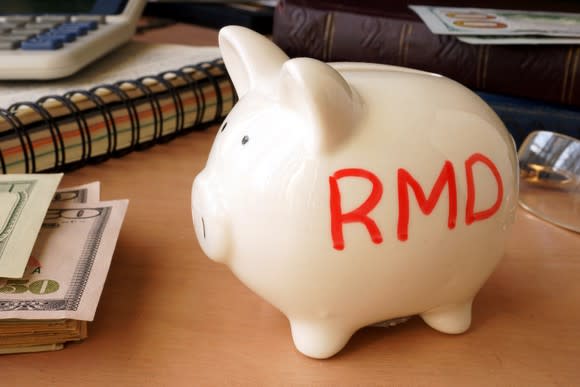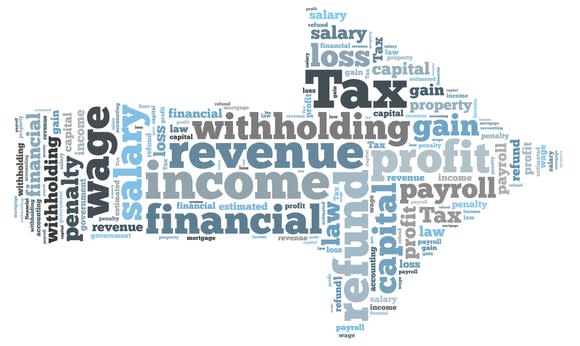5 Retirement Moves to Make Before 2018

Image source: Getty Images.
Whether you're actively retired or still in the planning stages, December 31, 2017, marks a pretty key date for you. The end of the year brings with it several retirement-related deadlines that you need to meet, or else opportunities slam shut and/or you may face stiff penalties. Here are five key moves to make before we welcome 2018 to help make sure you're doing what you can for your retirement.

Image source: Getty Images.
1. Take your Required Minimum Distributions
Once you're age 70.5 or older, you must start withdrawing money from your Traditional IRAs. At that age, you are also required to take money from your 401k or similar employer-sponsored retirement plan, unless you're still employed by the plan sponsor and are not a 5% owner of that business. For the first year you're required to take the distribution, you have until April 1 of the following year, but for every year after that, you must take the distribution by December 31.
If you don't take the full amount of that distribution on time, the IRS will assess you a 50% penalty on the money you should have withdrawn but didn't. In other words, if you needed to take $10,000 but only removed $2,000 by the deadline, you're short by $8,000. You'll face a $4,000 penalty on the undistributed money.
That's an incredibly stiff penalty. Fortunately, if you can convince the IRS that you missed the distribution due to "a reasonable error" and are taking the correct steps to correct the situation, they can waive the penalty. Those steps include taking the distribution and filing Form 5329 with an attached letter of explanation.

Image source: Getty Images.
2. Contribute to your 401k or similar employer-sponsored retirement plan
If you're under age 50, you can typically contribute up to $18,000 to your 401k or similar employer sponsored retirement plan in 2017. If you're 50 or older, you get an additional $6,000 in "catch up" contributions, making the total limit as high as $24,000.
That's a substantial chunk of change you can sock away into a tax-deferred account to help you save for your retirement. Still, as an employee, you need to have that money contributed by December 31 (or your last paycheck in the calendar year) to have it count as a 2017 contribution. If you miss the deadline, the window slams shut for 2017 contributions, but a new window opens up for you for 2018 on January 1, as long as you're still employed by the company that sponsors your plan.

Image source: Getty Images.
3. Convert some of your existing traditional retirement savings into a Roth IRA
No matter what your age, you may want to consider converting some of your traditional retirement savings to a Roth IRA. If you do, you must complete the conversion by December 31 to have it count for 2017, and you cannot convert money that needs to be part of a Required Minimum Distribution from your other retirement accounts. The conversion itself is a taxable event, but once the money is in your Roth IRA, it can continue to compound for you, potentially tax free until you withdraw it in retirement.
Some key reasons you might want to consider making that conversion include:
Money in your Roth IRA is not subject to Required Minimum Distributions, unlike money in your Traditional IRA or 401k type plan. While those distributions start small, they can get huge over time and dramatically raise your taxes and other costs later in life. Making a conversion now can subject you to a bit more taxes now, while saving you a lot more later.
Money in your Roth IRA can be withdrawn completely tax free during your retirement once you're at least 59.5 years old and have had your Roth IRA open for at least five years. That ability to take money out completely tax free gives you some incredible flexibility over the amount and timing of your retirement income.
Money in your Roth IRA can typically transfer to your children completely tax free once you pass. While your children can't let your Roth IRA money compound tax free in the account for the rest of their lives, they can usually take tax-free withdrawals from it using an IRS-approved method.

Image source: Getty Images.
4. Make sure you've had enough taxes withheld to remain in the IRS's good graces
Once you stop drawing a paycheck, you can generally take withdrawals from your retirement accounts without being forced to cover your taxes directly from those withdrawals. Nevertheless, even as a retiree, you still must pay your taxes either via timely estimated payments or timely withholdings from your available sources of income. If you're using withholdings to cover your tax burden, that money must be withheld from distributions or other payments to you by December 31 to count for 2017.
To remain within the IRS's good graces, you typically need to meet one of the following safe harbor tests via timely withholdings or timely estimated payments:
You pay to within $1,000 of what you owe for the tax year.
You pay at least 90% of what you owe for the tax year.
You pay at least 100% of what you owed for the previous tax year.
If you're a farmer or fisherman, you can get away with 66 2/3% instead of 90% to be covered by that particular safe harbor provision. On the flip side, if you're a higher income taxpayer, that third safe harbor becomes 110% of what you owed for the previous tax year, instead of 100%.

Image source: Getty Images.
5. Check your income -- and make any available adjustments to protect you from nearby painful "cliffs"
If you're retired and living off your investments, you frequently have a bit more control over both the timing and the amount of your income than you did when you were working. The advantage this gives you is that you may be able to adjust your net income for the year between now and December 31 to avoid some of the key "cliffs" you might otherwise face. Some of those key cliffs include:
50% of your Social Security benefits may become taxable at $25,000 in "combined income" as an individual or $32,000 if you're married filing jointly.
85% of your Social Security benefits may become taxable above $34,000 of
"combined income" as an individual or $44,000 if you're married filing jointly.
Your Medicare Part B premiums increase once your income passes $85,000 if you're single or married filing separately, or once it passes $170,000 if you're married filing jointly. Those costs can increase from the standard rate of $134 per month to as high as $428.60 per month.
If you're not yet on Medicare but do have an Obamacare insurance plan, you lose your premium subsidies once your income passes 400% of the federal poverty level for your household size.
Unlike other situations, crossing some of these cliffs -- particularly the healthcare related ones -- could put you in a situation where that extra $1 in income could easily cost you more than $1.
Making adjustments like this typically only make sense if you're close to one of those cliffs. If your income is already well above one of those points, it likely doesn't make sense -- and it may not even be feasible -- to lower your income substantially just to get below it.
More From The Motley Fool
6 Years Later, 6 Charts That Show How Far Apple, Inc. Has Come Since Steve Jobs' Passing
Why You're Smart to Buy Shopify Inc. (US) -- Despite Citron's Report
Chuck Saletta has no position in any of the stocks mentioned. The Motley Fool has no position in any of the stocks mentioned. The Motley Fool has a disclosure policy.

 Yahoo Finance
Yahoo Finance 